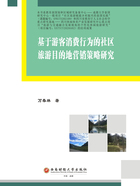
1.3 Research Gap
According to CBT studies,most of them focus on the following area:the impact of tourism on community(Kim,et al.,2013;Sebele,2010;Mbaiwa,2003;Ditta-Apichai,et al.,2020;Giampiccoli,2020;Sitikarn,2021 );attitudes and perceptions of community residents towards tourism impacts(Allen,et al.,1988;Andereck,et al.,2005;McCool,et al.,1994);community development and management(Giampiccoli,et al.,2021;Pasanchay and Schott,2021;Novelli,et al.,2017;Phanumat,et al.,2015;Blackstock,2005;Manyara,et al.,2007;Horn,et al.,2002;Choi,et al.,2011;Okazaki,2008;Zapata,et al.,2011 );theme of community participation(Wang,et al.,2021;Jun,2012;Jiu-xia,et al.,2006;Jing-jing,2011;Pratiwi,2000);theme of community-based tourism planning(Chatkaewnapanon and Lee,2022;Reed,1997;Jamal,et al.,1995);the relationship between gender and community-based tourism(Levy and Lerch,1991 );community resource conservation(Tang,2016;Twyman,2000;Agrawal and Gibson,2001;Brosius,et al.,2005),etc. Referring to the relevant literature,many studies can be found on CBT development system,and these studies focus on CBT's construction,sustainable development and product supply. The success of CBT needs to be supported by both supply and demand. The demand market that CBT focuses on is a niche tourism market and an indispensable supplement to the sustainable development of the community. However,as the other side of the resource supply,there are few studies on CBT market demand and marketing,especially for Chinese target tourists. A small number of current related literatures are mainly related to tourism promotion,community enterprise development and local economic development(Sebele,2010;Forstner,2004;Nel and Binns,2002;Ditta-Apichai,et al.,2020). It is necessary to strengthen the research on CBT marketing.
The rise of Generation Y,including Chinese Generation Y,creates an emerging target tourist market in digital era. Their values and lifestyles change traditional consumption behaviors and patterns of tourism. Moscardo,et al.(2011)explored the behavioral characteristics of Generation Y and the future of tourism. Some scholars(Li,et al.,2011;Gardiner,et al.,2017;Gao,et al.,2021)also analyzed the consumption behaviors of the Chinese Generation Y tourists(in China they are called after-80s and after-90s). However,few Chinese Generation Y tourists know about the development of CBT in Thailand and travel CBT in Thailand. There is almost no research in the area. It can be found that for CBT,it is very important to explore the innovative marketing strategy for Chinese Generation Y tourists,which not only involves the empowerment and development of CBT,but also facilitates active marketing of CBT to help CBT in terms of new product development,marketing innovation and the success in building sustainable friendly customer relationships with Chinese Generation Y tourists.This is still an unknown research field.
In brief,the success of CBT needs to be supported by both supply and demand. Generation Y creates an emerging tourist market in digital era. However,there are few studies on CBT marketing,especially for Chinese Generation Y tourists. Therefore,in digital era,CBT should develop innovative marketing strategy to attract Chinese Generation Y tourists to practice CBT in Thailand and establish long-term and profitable customer relationships with them. The study will contribute new knowledge in this area to make up for the research gap.